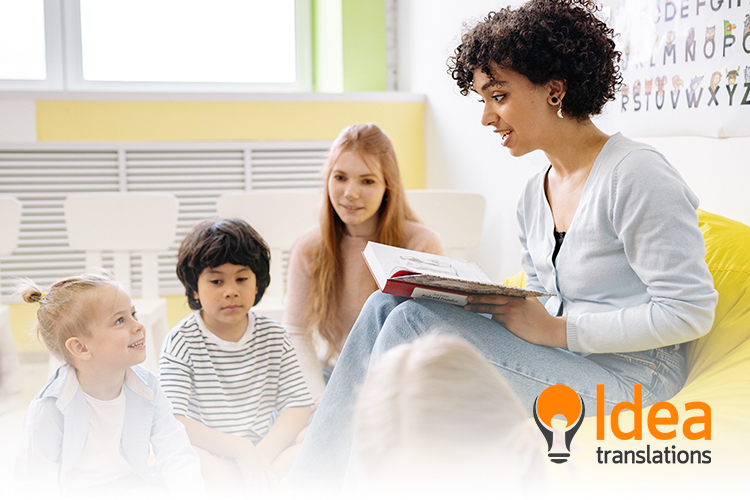
Educational Materials: The Importance of High-Quality Translations
Translating content is always a great responsibility, which must be undertaken by qualified people with the required expertise. In some areas, this task involves an even greater challenge. This is the case of teaching and educational materials, which define the tools and possibilities the younger generations will have as adults.
What are the main challenges in the translation of educational materials and why do we need experienced professionals for this task?
Ensure Relevant Communication
In countries like the United States, where multilingualism is prevalent and growing, ensuring that all students have the same opportunities in education is a big responsibility. The limited knowledge of English in some communities, for example, is an obstacle that we need to address.
This problem not only affects the young, but also their parents. In fact, it has been proven that a greater interaction and involvement of families in school is directly related to student success, not only in terms of grades, but also in terms of reduced absenteeism and increased perseverance and motivation.
Nothing fosters good relationships as good communication. Thus, reaching out to specialists who are qualified and experienced in translation is the best way of helping schools and other teaching institutions.
Some 3.8 million students in US schools are native speakers of Spanish and they are among the almost 5 million students who identify as learners of English as a second language.
Source: National Center for Education Statistics
Five Factors that Influence the Translation of Educational Material
Educational and teaching materials are specific documents, since they usually address certain issues or present a topic in a particular context. Regardless of whether the translation deals with material targeting younger students or adult professionals in a specific field, it is critical to pick the right experts to ensure accuracy, consistency and the high quality of translations in general.
These are the most important aspects to consider:
1. A Clearly Defined Tone: Each piece of educational material has a specific tone and style, which are related to the target audience. Some texts are formal and sophisticated, while others are informal and favor a reader-friendly style. In all cases, teaching materials have the specific style of the organization and author who issued them.
2. Consistency: This type of content usually includes a series of documents dealing with the same topic or used for the same audience. Therefore, it is key to maintain terminology consistency for students to unequivocally identify terms with their meanings.
3. Context: This element is crucial; it gives paralinguistic clues on the meaning of certain words or phrases, clarifies shades of meaning and determines specific cultural references. Context is very important for educational materials, because the same context may alter its meaning in different contexts and impact students differently.
4. Relevant Cultural References: Unlike technical documents, teaching materials use many cultural references or concepts that are specific to a certain location, community, age group, etc. These linguistic cues make texts more understandable for students and allow them to adequately interact with the material. Thus, the translated material should have the same connotations, regardless of the language.
5. Localization of Non-Verbal Elements: Images, graphs. charts, names, currency units and other non-verbal elements are frequent in educational material. These elements help students visualize complex concepts and are vital for the teaching approach of choice. Proper localization requires a previous investigation in order to present non-verbal elements adequately.
85% of US parents prefer printed educational books vs. digital content and 88% thinks they are essential learning tools for long-term student success.
Source: Book Manufacturers’ Institute
Experienced translators have the challenge to recreate the same messages in the target language, maintaining tone and style. It is crucial to keep translated texts culturally relevant for the target audience, while also being faithful to the source material.
Regional, colloquial and dialect variations should be carefully considered, as should all acronyms, gender markers and terms that may be offensive in a certain language, among many other considerations.
Organizations that have a constant need to translate multiple educational materials need linguistic service partners that are familiar with the translation process for teachers and instructors.
Likewise, the availability of guidelines, glossaries and style guides issued by the educational institution will also contribute to the quality of the translation. With all these tools, the translator will be better equipped to translate texts aimed at students.


